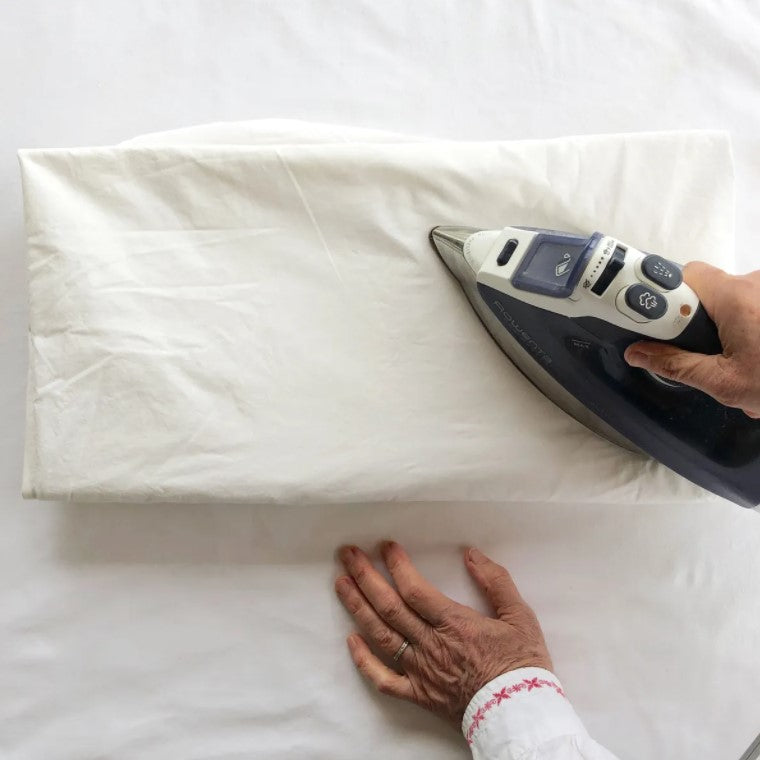365-DAY GUARANTEE | FREE SHIPPING | FREE RETURNS
365-DAY GUARANTEE | FREE SHIPPING | FREE RETURNS
365-DAY GUARANTEE | FREE SHIPPING | FREE RETURNS
There’s something universally appealing about climbing into crisp sheets. Wrinkle-free bedding delivers that clean, luxurious hotel feeling from the comfort of your own home. But is ironing sheets actually necessary?
Well, no. You don’t have to pull out the ironing board every time you make your bed. Some fabric types like linen and cotton percale are naturally wrinkle-prone, and we support that lived-in bedding look.
However, that freshly ironed look and feel are pretty unmatched. So if you have a few minutes to get out those stubborn creases, we recommend it. And if you don’t have a ton of spare time, no worries! We’ll take you through some ways to iron your bed linens in a pinch.
Okay, so you’ve decided in favor of ironing your sheets. Great choice! If you’re not exactly sure where to begin, no worries. We’ve got you covered.


Wash your sheets. To best achieve that dreamy feeling and fresh scent, start with clean bedsheets. Wash as usual, but pull the bedding out of the dryer while the fabric is still damp. Add starch. Starching your sheets (yes, literally adding starch to them) elevates their texture, making them feel soft, durable, and crisp but not stiff. Plus, it makes it easier to get rid of pesky creases. There are a few different ways of starching sheets.
Helpful Tips

We get that you don’t always have enough spare time to pull out the iron but still want beautiful crisp sheets. So, what alternatives are there? Try these out.
Ironing your bedding enhances that luxurious, hotel-like feeling and makes hopping into bed such a treat. Luckily, it’s easy to iron your bedsheets. Remember to use an ironing board, patch test before beginning, and that water is your friend. If you’re in a pinch, try using a steamer or tossing damp linens in the dryer to remove wrinkles quickly.
